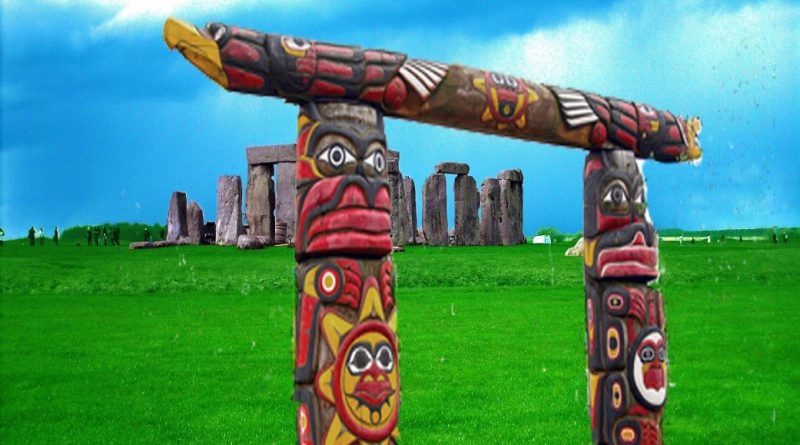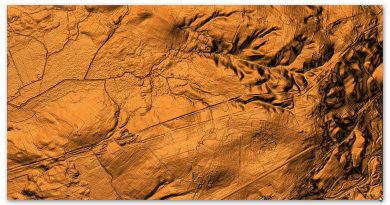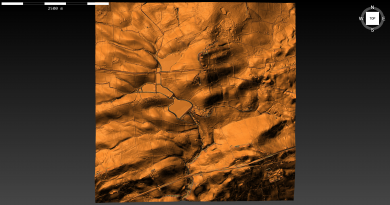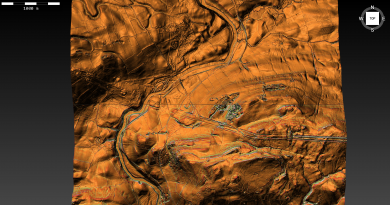The Stonehenge Hoax – Totem Poles
Lots of cowboys (archaeologists) but no Indians (scientists) – Extract from the book Conundrum 4 – ( The Stonehenge Hoax – Totem Poles )
The Problem
Four post holes were found in the old visitor’s car park at Stonehenge in 1966; these holes were excavated, and the pine charcoal found was dated (by observation) to be Neolithic, and the same date as the carbon-dated Antler picks found on the site some 50m away. The problem arose when someone pointed out that Pine trees didn’t exist in the Stonehenge area in the Neolithic and that the post holes were filled in with ‘silt’ (from a river). So they carbon-dated the pine to find out it was Meslithic some 5,000 before Stonehenge was supposedly built – so they came up with a story of ‘Totem Poles’ placed at random from a hunter-gather tribe, which had nothing to do with Stonehenge.
The Solution
The most compelling evidence for the rise in water tables during the prehistoric period can be found in the old car park of Stonehenge. Ignored by visitors who used to casually park their cars near the stones, three giant circles (similar to mini-roundabouts) were painted on the floor.
These painted circles showed where post holes were discovered when the car park was first constructed, measuring at least 1 metre in diameter. Interestingly, and somewhat ironically, the original car park was built at this location because archaeologists believed that this area had no historical relevance – which was far from the truth. During these excavations, three pits were discovered, which contained pieces of bone and fragments of charcoal – as the pits had held large wooden posts. When this pine charcoal was eventually carbon-dated, it was found to be some 10,000 years old, over twice the age of any other part of Stonehenge.
Traditional archaeology describes these posts that would have been placed in these post holes as ‘totem poles’. However, if this were true, why would the Mesolithic people need to struggle with using giant trees over 1 metre wide (which would be 150 to 200 ft tall) to erect a ‘ritual’ totem pole? Our ancestors only possessed flint axes and fire, it would seem more plausible that smaller trees would have been utilised (as seen in North America) to create these ‘totem poles’ rather than the giant metre-wide variety?
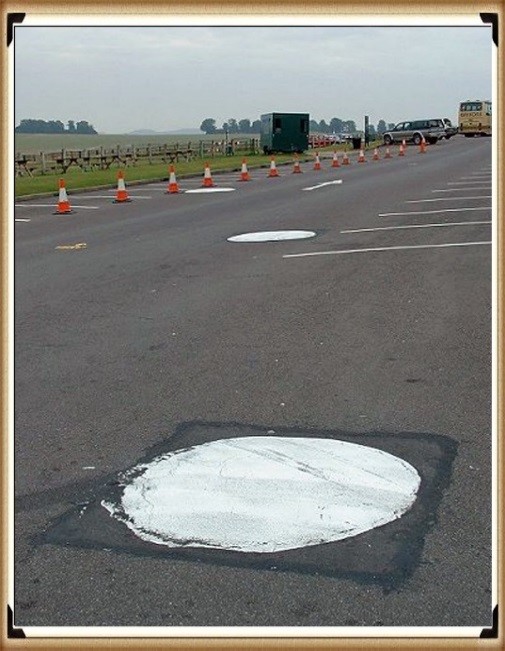
The old car park is 10m lower than the Stonehenge site, and recent radiocarbon dating (by Darvill and Wainwright’s excavations in 2008) has confirmed from charcoal remains (inside the Sarsen Circle) that the area on which the Stonehenge monument is situated was also in use by 7200 BCE and this was confirmed a couple of years later by a team from the Open University, who found an OX tooth, from ‘feasting’ in a nearby site called ‘Blick Mead’ that was also dated during the 7th millennium BCE at 6250 BCE, emphasising that this area of Stonehenge was for other purposes, rather than an isolated site with marker posts.
If my hypothesis is correct, these post holes housed posts which were functional mooring posts for boats. They were utilised for unloading their stone cargo, and as it was on a tidal river – the post’s cross-beams could be used as simple lifting devices. These cross beams were placed on two of these 1 metre wide posts, secured with a simple mortise and tenon joint, as used on the Stonehenge lintels.
This lifting device could have been used to raise stones from boats during high tide by merely tying the stones to the cross beams. Then, as the tide receded, the vessel holding the stone would naturally lower in the water, lifting the stone ‘like magic’ into the air. This is the first example of a hydraulic lift, which shows the level of sophistication in our ancestor’s thinking. The stone could then be lowered to either a sledge or rollers placed under the cross beam for the 50m journey to the top of the hill.
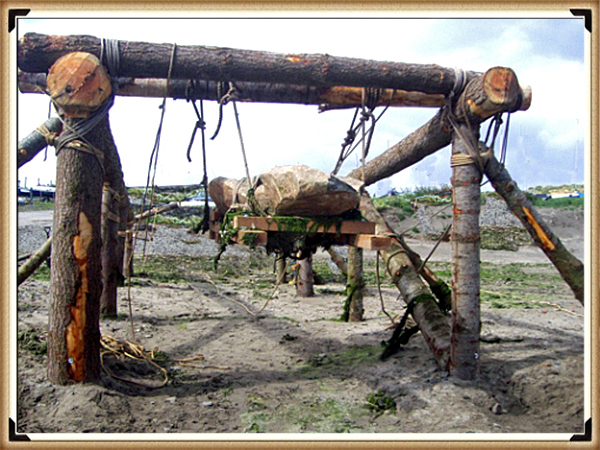
Archaeologists have always calculated that to transport the Bluestones, our ancestors had taken a very long and dangerous boat trip around the coast of South West Britain to an outlet on the South coast that allowed boats to travel up the River Avon or to the banks of Somerset in the North, and had then to dragged the stones some 50 miles South, to their resting place in Salisbury Plain. Or some have even imagined dragging these 4-tonne stones on sledges over 200 miles through woods, forests, and rivers.
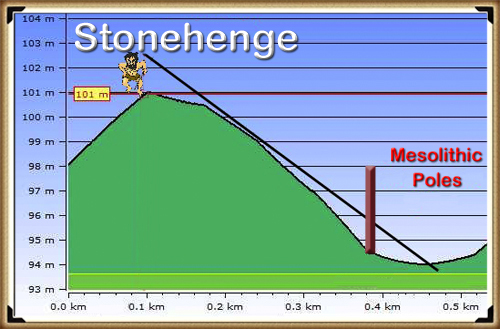
My ‘Post-Glacial Flooding Hypothesis’ now enables us to understand how they could have easily travelled on a direct water route between South Wales through Somerset to the Rivers Kennet and Avon to bring these stones to Stonehenge and how easy it was to use tidal hydraulics to place these stones carefully on to boats for the journey.
The Validation of my theory was found came with the discovery of the Stonehenge Quarry (Craig Rhos_Y-Felin), which has a series of Mesolithic Hearths that match the carbon dates of the four Old Car Park post holes.
Why did they place mooring posts towards the North-West Entrance?
Based on my hypothesis, there should be some evidence of a ‘lost’ processional walkway on the North West side of the monument, towards the original ancient shoreline and mooring station, which would have acted as a natural entry route to the site. In addition, archaeologists have discovered a series of holes (known as Q & R holes) in a semi-circular shape at the centre of Stonehenge, which predates the current Sarsen Stones. The most interesting aspect of this semi-circle is its alignment in a North-Western direction.
In astronomical terms, this is very important as it faces the midsummer moonset’s general direction- highlighting the moon’s relationship to the site, as opposed to the Sun, as many ‘druids’ would have us believe. This connection is reinforced as the construction of the mooring posts was based on the tidal waters, which depend on the moon’s position and time of day.
One of the most significant archaeological mysteries of the Mesolithic and Neolithic periods is the lack of human remains.
We know that the population would have been relatively small during these periods in history, but the lack of graves has forced archaeologists to investigate non-burial alternatives. One of the favoured alternative methods to burial is known as ‘excarnation’. Native American Indian tribes commonly practised this process, which involves the corpse being left open to the elements to decompose – a symbolic method of returning the body to mother earth.
The larger bones would then be collected together and buried with other members of the tribe or family in vaults or tombs. We know that such groups of bones have been found in the Long Barrows surrounding Stonehenge, but to date, no dedicated excarnation sites have been found, until now.
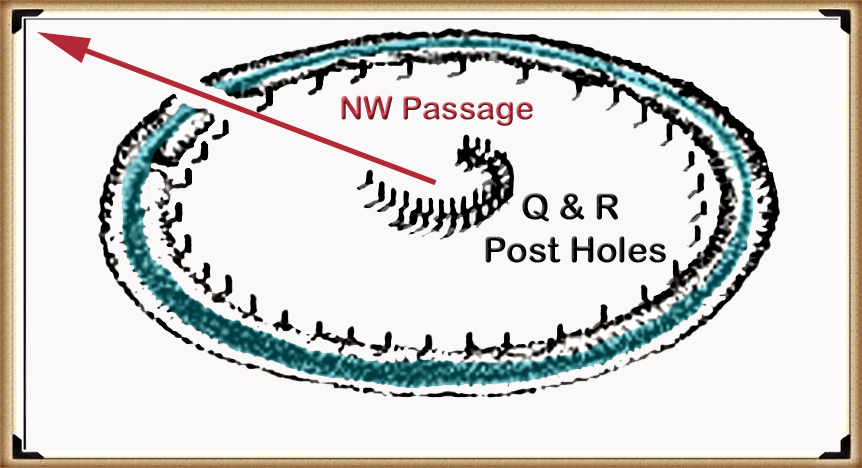
Looking at these Q & R post holes, these form a pre-Sarsen semi-circle at Stonehenge. If you look closely, they consist of two parallel sets. Moreover, they emulate not a ‘horseshoe’ as the archaeologists typically refer to such objects, but a ‘crescent moon’ for an apparent reason, in preparation for the journey to the land of the dead. Another point of interest is the distance between each stone in each individual set, which is approximately 2 metres. The 2 metres (6-foot) spacing of these stone holes should seem familiar as it’s the same length as an average coffin or gravel pit. As this was a monument to the dead, it would seem appropriate that it would be designed in such a way as to allow bodies to be positioned at its centre, aligned with the setting moon.
The platforms upon which the dead were laid were likely either wooden or stone slabs – as we see from other prehistoric monuments known as ‘Dolmens’ which archaeologists have still to identify their purpose.
Moreover, a resistance survey was taken in May 1994 clearly shows a path leading from the centre of the monument to the car park post holes, past the expected location of Aubrey Hole 40 – the lack of evidence for this post hole may also indicate that there once existed a pathway that passed to the North West on the original plan of the site.
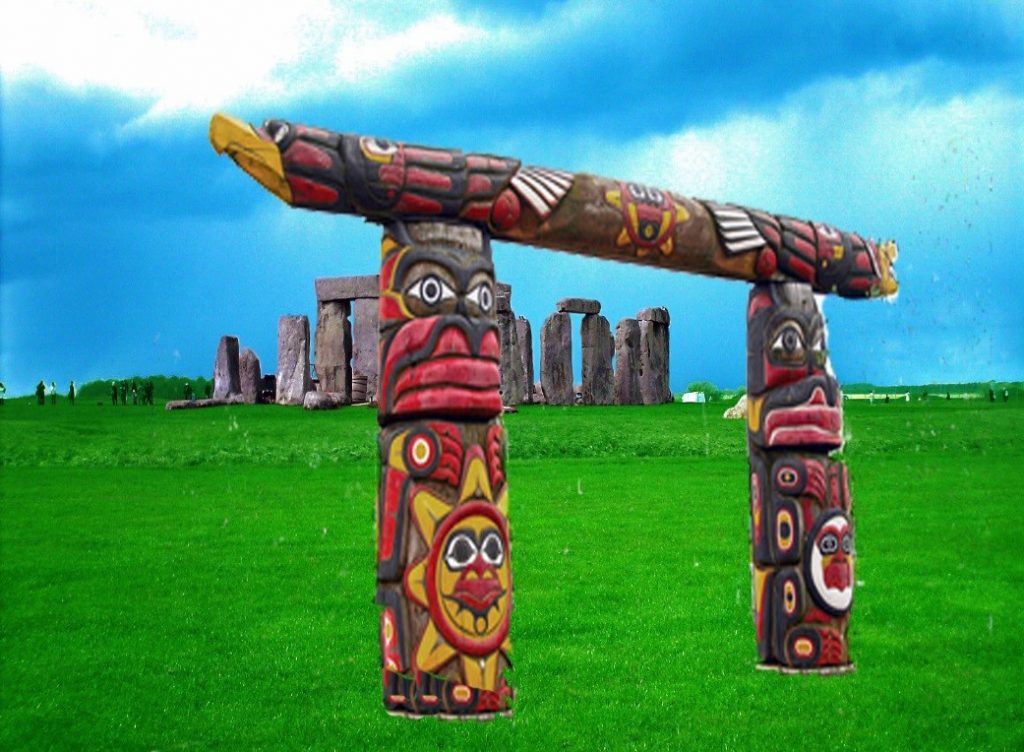
Further Reading
For information about British Prehistory, visit www.prehistoric-britain.co.uk for the most extensive archaeology blogs and investigations collection, including modern LiDAR reports. This site also includes extracts and articles from the Robert John Langdon Trilogy about Britain in the Prehistoric period, including titles such as The Stonehenge Enigma, Dawn of the Lost Civilisation and the ultimate proof of Post Glacial Flooding and the landscape we see today.
Robert John Langdon has also created a YouTube web channel with over 100 investigations and video documentaries to support his classic trilogy (Prehistoric Britain). He has also released a collection of strange coincidences that he calls ‘13 Things that Don’t Make Sense in History’ and his recent discovery of a lost Stone Avenue at Avebury in Wiltshire called ‘Silbury Avenue – the Lost Stone Avenue’.
Langdon has also produced a series of ‘shorts’, which are extracts from his main body of books:
For active discussions on the findings of the TRILOGY and recent LiDAR investigations that are published on our WEBSITE, you can join our and leave a message or join the debate on our Facebook Group.

